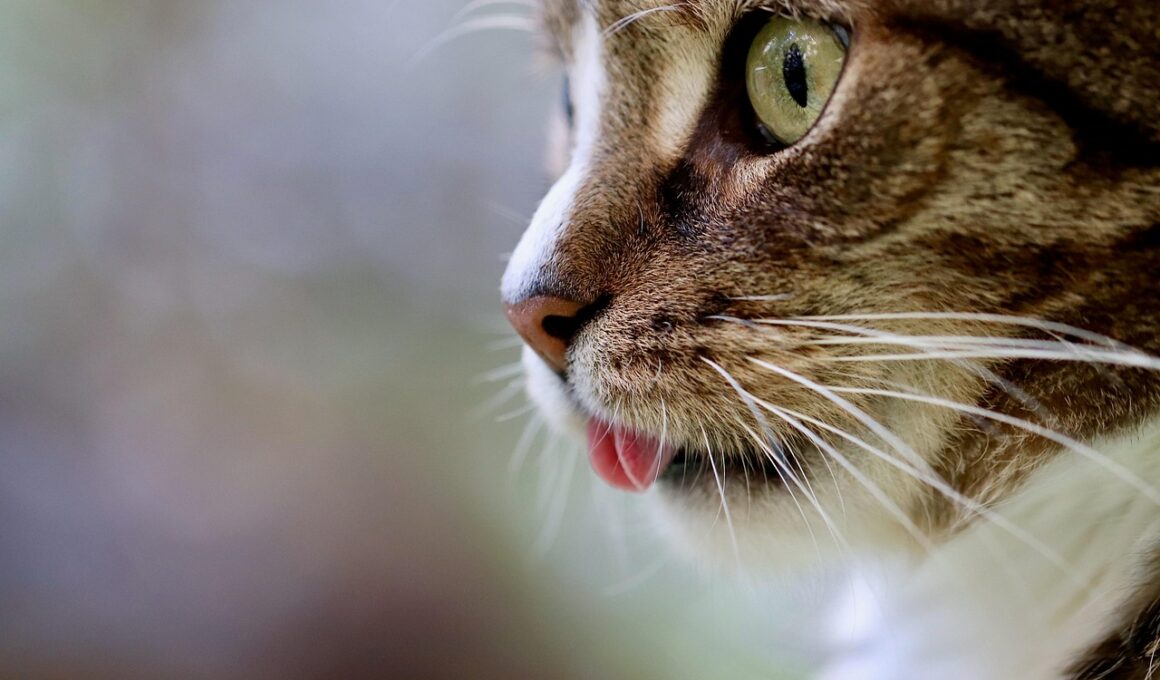How to Discourage Problematic Cat Marking Without Stressing Your Pet
Cats are inherently territorial animals, and marking their territory is a natural behavior. Understanding why cats mark their territory is crucial for effectively addressing this issue. Territorial marking can manifest as both urine spraying and scratching, and it may occur due to various reasons such as stress, the presence of other animals, or a desire to establish dominance. Recognizing the triggers for your cat’s marking behavior is the first step in reducing it. Changes in their environment, a new pet, or even changes within the household can cause territorial disputes. To help your cat feel secure, it is essential to provide them with a stable environment, where they can establish their space without feeling threatened. Creating vertical spaces, such as cat trees and shelves, can help your cat feel more in control of their surroundings. This allows them to retreat to higher ground if they feel stressed. Ensuring your home meets your cat’s territorial instincts can significantly reduce problematic marking and make your feline companions feel safer and more comfortable in their environment.
When tackling the issue of cat territorial markings, it’s crucial to consult with a veterinarian to rule out medical conditions. Urinary tract infections or other health issues can lead to increased marking behavior. Establish a clear communication line with your vet for effective diagnosis and treatment. Once health concerns are addressed, behavioral strategies come into play. One immediate approach is to thoroughly clean any marked areas using enzymatic cleaners to eliminate scents that may encourage repeated marking. Following cleaning, reintroduce your cat into the area gradually to reduce anxiety. Another key strategy is to provide enrichment activities to divert your cat’s focus. Puzzle toys, interactive play, and even scent trails using catnip can help keep your cat engaged and less focused on marking their territory. Additionally, using pheromone diffusers can create a calming environment, reminiscent of their natural surroundings. By creating an environment that reduces anxiety and enriches their life, you can decrease your cat’s need to mark while ensuring their wellbeing is prioritized. Regular interactions and positive reinforcement can further help diminish any territorial impulses.
Creating a Calm Environment
An essential part of reducing territorial marking involves creating a calm and stress-free environment. Cats are sensitive to their surroundings, and disruptions can lead to increased marking behavior. Start by observing your cat’s behavior closely to identify stressors, which could include loud noises, unfamiliar visitors, or other pets. To manage these stressors, consider designating safe spaces where your cat can retreat at any time, like cozy beds or quiet rooms. Calming aids, such as soft music or a consistent daily routine, can also aid in minimizing stress. Incorporating visual barriers like curtains or screens between your cat’s favorite areas and potential disturbances can provide security. Creating a multi-cat household or fostering relationships among your pets may also require deliberate integration to prevent territorial disputes. Gradual introductions and respecting individual space can foster a peaceful coexistence. Security is a critical aspect for a cat’s peace of mind, and ensuring they have areas free from conflict will be beneficial in curbing any territorial marking they may exhibit while ensuring their overall happiness.
In addition to environmental modifications, behavioral training plays a fundamental role in addressing your cat’s territorial tendencies. Providing positive reinforcement when your cat uses a designated litter area instead of marking can redirect their behavior. Treats, praise, or playtime can significantly influence their habits. It’s crucial to remain patient throughout this process, as changing behavior takes time. If possible, redirect your cat’s marking instincts by offering a safe outlet, such as scratching posts or designated areas for exploration, like cat trees. Regular interaction throughout the day reinforces your bond and provides emotional security, reducing their need to claim their territory through marking behaviors. Cats thrive on routine, so establishing consistent playtimes, feeding schedules, and ample exploration opportunities can further benefit their psychological wellbeing. Providing toys that promote engagement can offer mental stimulation, diminishing their need to mark out of boredom. Encouraging these alternative outlets enables a healthy relationship with each of your pets and helps lessen their territorial aspirations while enriching their everyday lives significantly.
Using Deterrents Wisely
To minimize territorial marking, using the right deterrents is essential. Several options are available that can be effectively implemented without stressing your pet. Household scents such as citrus may deter cats from marked areas, as their keen olfactory senses dislike such smells. Experimenting with safe, cat-friendly alternatives is vital to ensure they do not cause distress. Additionally, motion-activated deterrents can provide a non-aggressive way to discourage marking in specific areas. These devices emit sounds or air bursts when your cat approaches, redirecting their attention away from undesirable spots. However, you should avoid using aggressive methods, such as physical punishments, as they can lead to fear and anxiety. Instead, focus on creating an environment where your cat feels secure and comfortable. High-quality, stress-free education fosters trust and strengthens your bond with your cat. Consistently employing these deterrents while reinforcing positive behaviors typically allows a smoother adjustment period for your furry friend. The goal is to create a home where your cat feels content to explore without feeling the need to establish territory through marking.
Another helpful method to curb problematic territorial marking is implementing a consistent and effective litter box strategy. Ensure you have enough litter boxes; the general rule is one per cat plus one extra. Place them in quiet locations to promote use without stress. Keep them clean by scooping daily and performing full cleanings regularly. Some cats prefer specific types of litter, so try different options to find what suits your pet best. Provide a variety of comfortable resting areas throughout your home, ensuring your cat feels secure and in charge. If your cat marks due to jealousy or competition, separate cats when you know they’d feel threatened. Reducing competition is paramount to curbing territorial issues, as siblings might view each other as rivals. Gradual reintroductions may help alleviate tensions, permitting cats to adjust naturally. Finally, consider consulting a behaviorist specializing in feline behavior for tailored strategies. Understanding your cat’s specific needs and stressors can enable you to develop personalized approaches. These measures create an environment where your cat feels both secure and accepted in dynamic situations, ultimately reducing marking.
Conclusion: Promoting a Healthy Relationship with Your Cat
In conclusion, addressing problematic cat marking necessitates a harmonious balance of understanding, patience, and proactive measures. By delving into their behavioral motivations and establishing a cat-friendly environment, you not only mitigate territorial marking but also support their overall emotional well-being. Regular interaction, enriched experiences, and stress reducers are significant elements in fostering a peaceful coexistence among your feline companions. Always prioritize ongoing communication with your veterinarian to address any potential health issues contributing to disruptive behavior. Remember that every cat is unique, so crafting an individual approach tailored to their needs is crucial. Your commitment will lead to a more secure, trusting, and less-stressed cat community in your home. As a cat guardian, it’s vital to engage in this effort consistently to reap long-term benefits. Staying attuned to changes can help prevent misunderstandings and facilitate long-lasting solutions while reinforcing your bond. Over time, you should observe a significant decrease in territorial marking behavior, leading to a happier feline family. This harmonious approach ultimately enhances the quality of life for both you and your furry friends.
In conclusion, addressing problematic cat marking necessitates a harmonious balance of understanding, patience, and proactive measures. By delving into their behavioral motivations and establishing a cat-friendly environment, you not only mitigate territorial marking but also support their overall emotional well-being. Regular interaction, enriched experiences, and stress reducers are significant elements in fostering a peaceful coexistence among your feline companions. Always prioritize ongoing communication with your veterinarian to address any potential health issues contributing to disruptive behavior. Remember that every cat is unique, so crafting an individual approach tailored to their needs is crucial. Your commitment will lead to a more secure, trusting, and less-stressed cat community in your home. As a cat guardian, it’s vital to engage in this effort consistently to reap long-term benefits. Staying attuned to changes can help prevent misunderstandings and facilitate long-lasting solutions while reinforcing your bond. Over time, you should observe a significant decrease in territorial marking behavior, leading to a happier feline family. This harmonious approach ultimately enhances the quality of life for both you and your furry friends.


